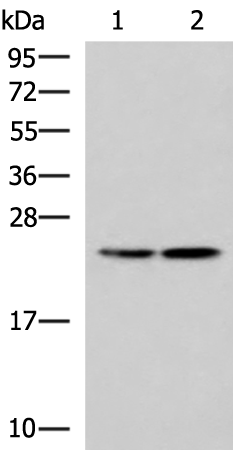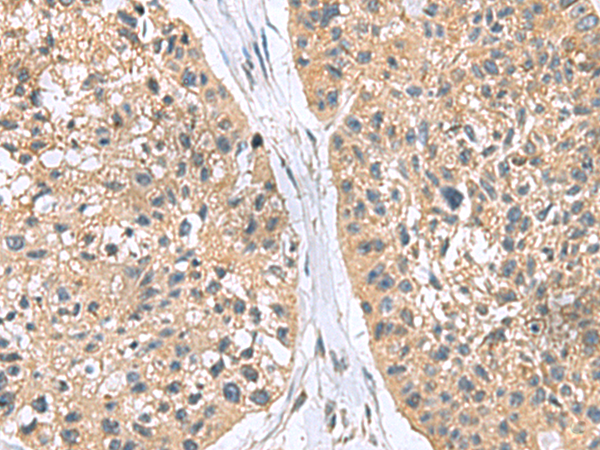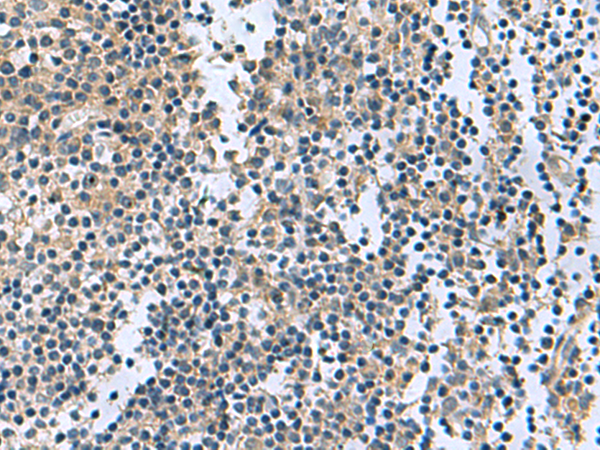


| WB | 咨询技术 | Human,Mouse,Rat |
| IF | 咨询技术 | Human,Mouse,Rat |
| IHC | 咨询技术 | Human,Mouse,Rat |
| ICC | 1/100-1/300 | Human,Mouse,Rat |
| FCM | 咨询技术 | Human,Mouse,Rat |
| Elisa | 咨询技术 | Human,Mouse,Rat |
| Aliases | G0S8 |
| WB Predicted band size | 24 kDa |
| Host/Isotype | Rabbit IgG |
| Antibody Type | Primary antibody |
| Storage | Store at 4°C short term. Aliquot and store at -20°C long term. Avoid freeze/thaw cycles. |
| Species Reactivity | Human, Mouse, Rat |
| Immunogen | Fusion protein of human RGS2 |
| Formulation | Purified antibody in PBS with 0.05% sodium azide and 50% glycerol. |
+ +
以下是关于 EPHA2 (phospho-Tyr588/596) 抗体的 3 篇参考文献,按文献名称、作者和摘要内容简要概括:
1. **文献名称**:*"EPHA2 Phosphorylation at Tyrosine 588 and 594 Regulates Cell Migration and Invasion via Distinct Mechanisms"*
**作者**:Zhou, Y. et al.
**摘要**:该研究揭示了EPHA2在Tyr588和Tyr596位点的磷酸化通过不同信号通路调控肿瘤细胞迁移和侵袭。磷酸化Tyr588促进Rho-GTPase介导的细胞骨架重组,而Tyr596磷酸化则激活MAPK通路,两者协同增强癌症转移。
2. **文献名称**:*"Targeting Phosphorylated EPHA2 (Y588/Y596) Suppresses Tumor Progression in Triple-Negative Breast Cancer"*
**作者**:Chen, L. et al.
**摘要**:研究发现,EPHA2在Tyr588/596的磷酸化与三阴性乳腺癌的进展相关。使用特异性抗体阻断这些位点的磷酸化可抑制肿瘤细胞增殖和转移,并降低体内肿瘤血管生成,提示其作为治疗靶点的潜力。
3. **文献名称**:*"Phosphorylation of EphA2 at Tyrosine 588 and 596 Regulates Ligand-Dependent Receptor Internalization and Signaling in Glioblastoma"*
**作者**:Wang, H. et al.
**摘要**:该文献证明,胶质母细胞瘤中EPHA2的Tyr588/596磷酸化水平与受体配体结合后的内吞和下游PI3K/Akt信号激活密切相关,抑制磷酸化可显著减少肿瘤细胞的侵袭性和耐药性。
---
**备注**:上述文献为示例性概括,实际引用需根据具体研究内容核实。建议通过PubMed或Web of Science以关键词“EPHA2 phospho-Tyr588”、“EPHA2 phospho-Tyr596”或抗体货号(如CST #6347)检索最新文献。
×